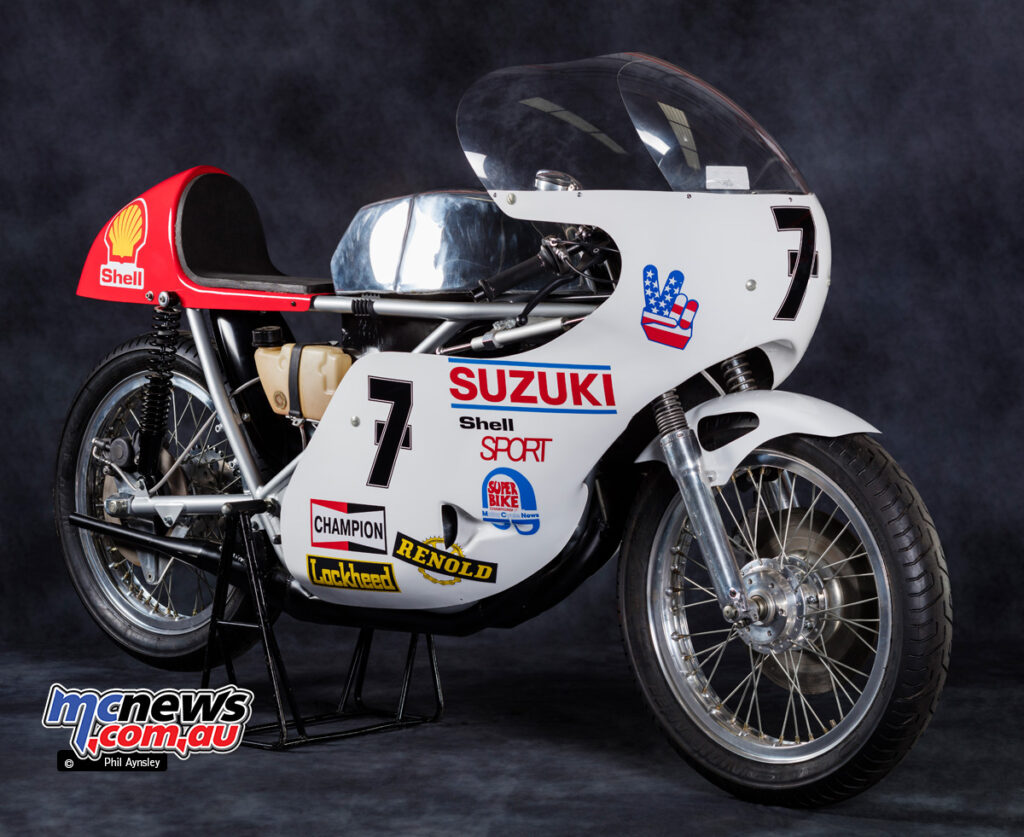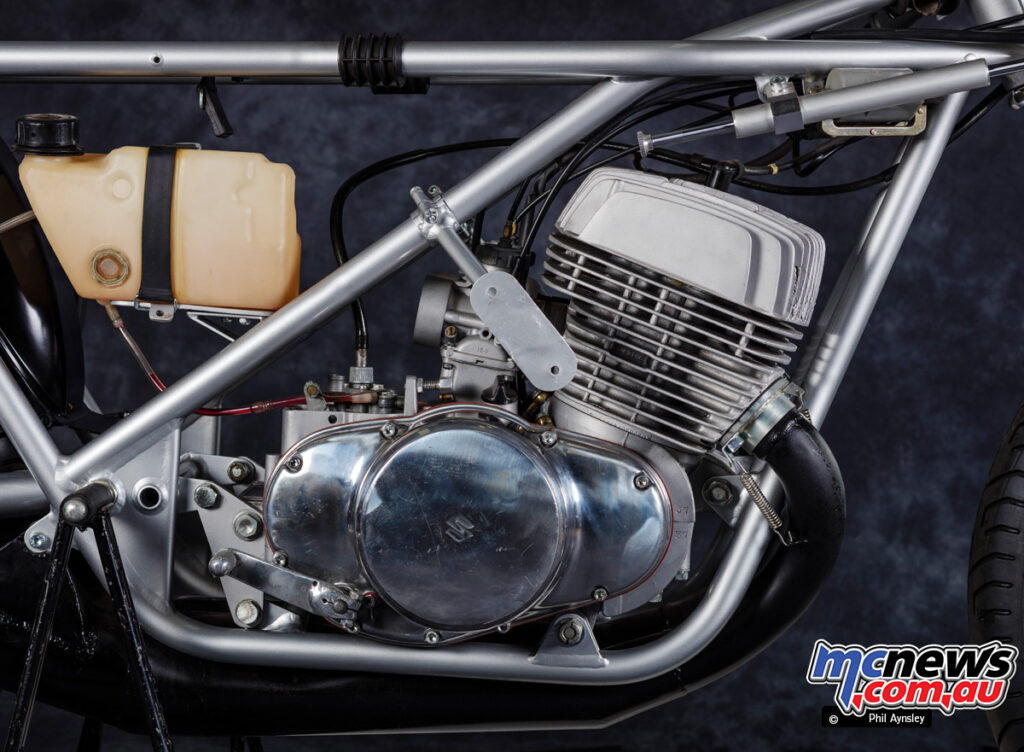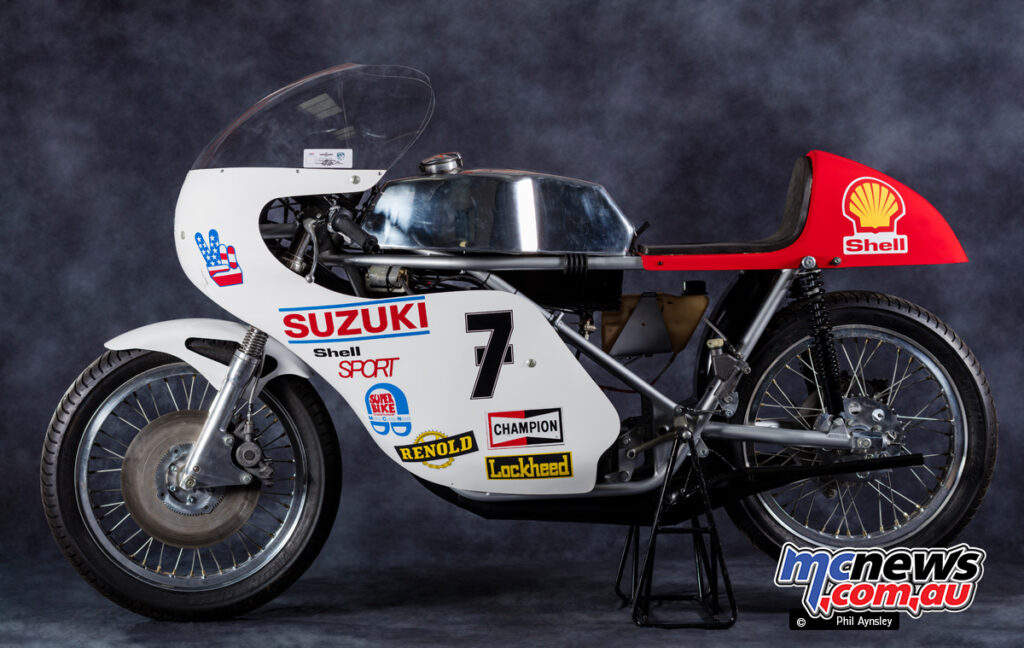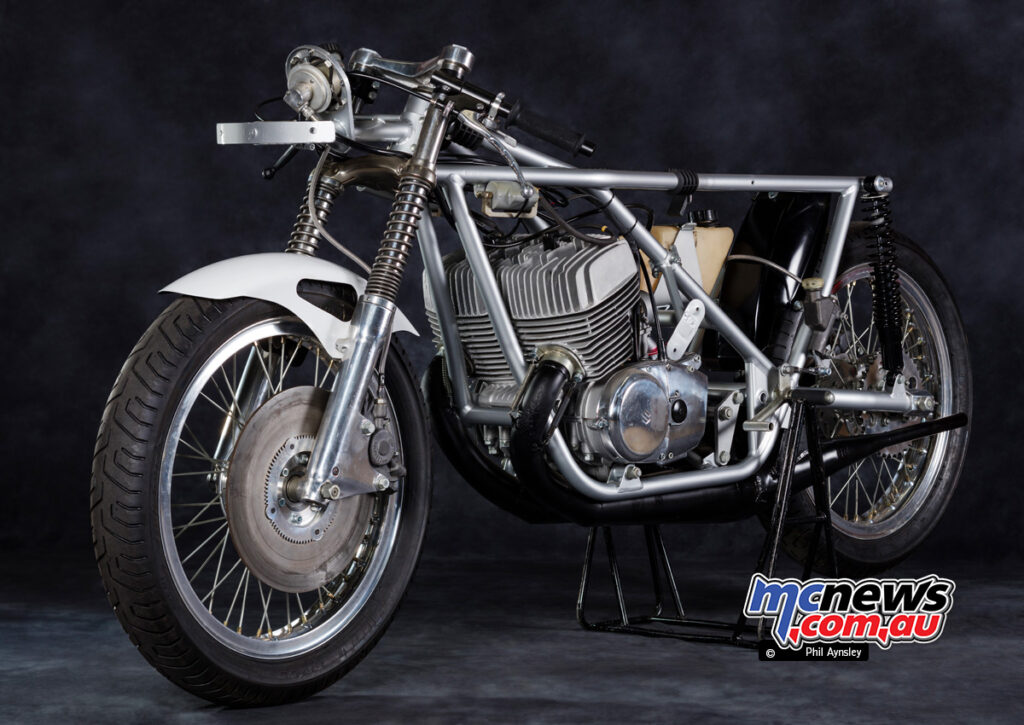Seeley Suzuki TR500
With Phil Aynsley
This is a rather historical bike. Suzuki withdrew from GP competition in 1967, but returned in a limited way with the introduction of the XR05, which was based on the 500 cc Cobra/Titan road bike.

This modified motor was fitted with a ‘featherbed’ inspired frame and first raced at Daytona in 1968, with Ron Grant placing fourth, and Mitsuo Itoh ninth. Power output was 63.5 horsepower.
It wasn’t until 1971 that the XR05 was officially entered in the 500cc World Championship. Riders Keith Turner, Rob Bron and Jack Findlay finished the season in second, third and fifth places respectively. Findlay’s victory in the Ulster GP was Suzuki’s first in the 500cc class as well as the first win by a two-stroke.

Despite this success, the bike’s handling left a lot to be desired so famed chassis builder Colin Seeley was commissioned by Suzuki Team Manager Rex White to construct a frame to house the XR05 motor.
A certain Barry Sheene was to be the rider. This prototype frame was made from 1 1/8th Reynolds 531 tubing, bronze welded and had a long 55.5 inch wheelbase.

Sheene reported it was the best handling bike he had ever ridden and proceeded to win the British Championship on it.
The bike seen here is one of the two bikes supplied by Seeley to Barry and has been restored to circa 1973 specifications. Barry sold it to his friend Dave Goddard who in turn sold it to the current owner in 2010.
Both Colin Seeley and Paul Smart have confirmed its history. Suzuki records show that the engine (TR500-100061) was one of the two supplied to Frank Sheene, Barry’s father.

Retail versions of the Seely frame, a full rolling chassis, were soon made and available for £350. A new road motor cost £250 and could be tuned as much as the owner could afford.
Competitive 500 cc GP racing was suddenly affordable!
Source: MCNews.com.au
























